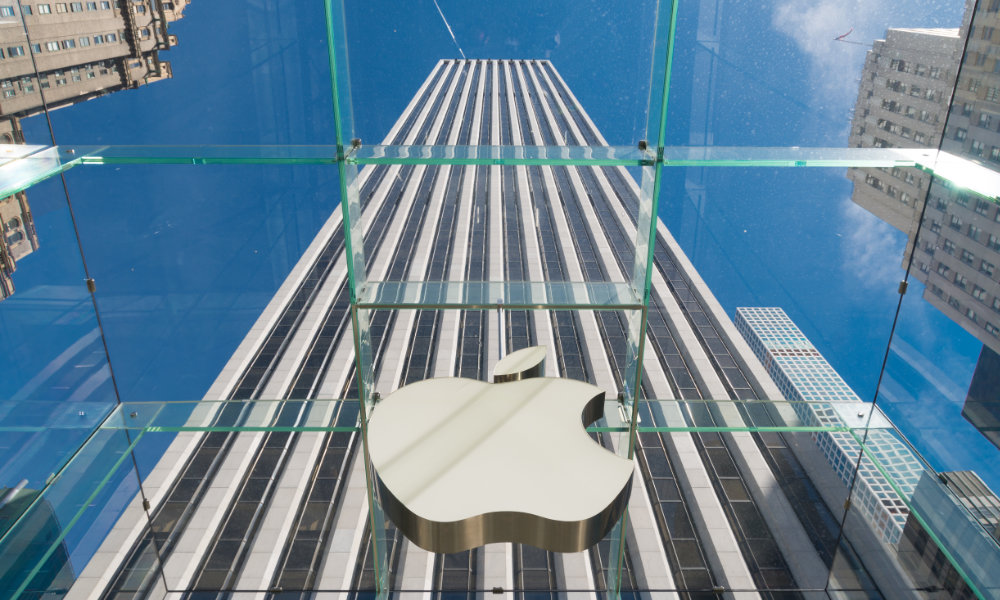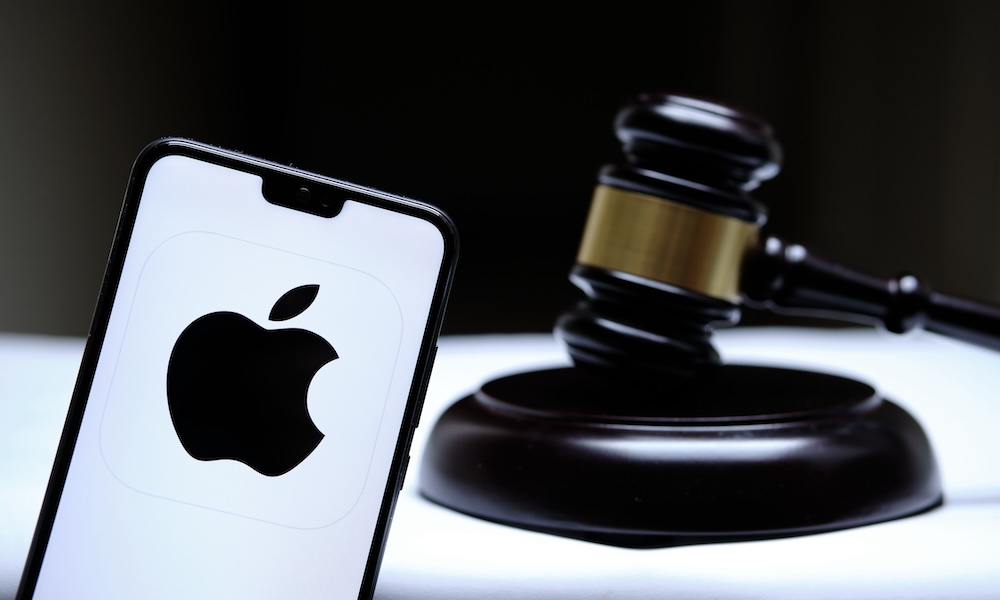Apple Strikes Back in Bid to Dismiss DoJ Antitrust Case
 Credit: Getty Images / Unsplash+
Credit: Getty Images / Unsplash+Toggle Dark Mode
Two months ago, the United States Department of Justice filed a massive antitrust lawsuit against Apple, hitting on nearly every aspect of Apple’s business, from the App Store and iPhone to Apple Pay and the Apple Watch.
The omnibus case, which resulted from a five-year investigation into Apple, seemed to be an attempt by the DoJ to throw everything at the wall to see what sticks. Some claims, such as those concerning app distribution, were reasonable and even mirrored similar ones made by the European Commission in formulating its Digital Markets Act.
However, the DoJ seems to be grasping at straws in other areas, such as its claim that CarPlay is anti-competitive and threatens to give Apple “dominance over the automotive industry.”
Unsurprisingly, Apple is now calling out the DoJ on its far-reaching claims. While it’s likely that Apple would have fought to have the case dismissed even if it was more reasonably and narrowly focused, the broad nature of it gives Apple even more legal ammo to declare the DoJ’s position invalid.
Apple’s Rebuttal
In a letter to the court filed today and shared by 9to5Mac, Apple claims the case “lies well beyond the outer limits of antitrust law,” and accuses the Department of Justice of trying to “forge a new theory of antitrust liability that no court has recognized.”
In outlining its case, Apple makes three claims that suggest the Government is overreaching in its attempts to paint Apple as an anti-competitive monopoly.
- The Complaint Does Not Allege Anticompetitive Conduct.
- The Complaint Does Not Allege Substantial Anticompetitive Effects.
- The Complaint Does Not Allege Monopoly Power in a Relevant Market.
One of the key challenges with the DoJ’s case from the beginning is that it’s been forced to move the goalposts to try and make the laws fit Apple, rather than the other way around, often narrowing definitions of “monopoly” and “anti-competitive” to fit the circumstances.
For example, while Apple has a slight majority share of the US smartphone market — around 55–60%, depending on which market analysis you read — that’s far from anything that would qualify as a monopoly. So, the DoJ lawsuit claims instead that Apple has a monopoly in the high-end “performance” smartphone market. It also measures monopoly by revenue rather than unit sales, claiming that Apple’s profits account for over 70% of all smartphones sold in the United States.
That’s a shaky argument to begin with, but the DoJ then tries to back that up by citing other aspects it believes are proof of Apple’s monopoly, including the fact that younger users tend to choose the iPhone as a result of peer pressure (the so-called “green bubble phenomenon”) and that more affluent households also tend to choose the iPhone over competing devices.
Apple naturally disagrees with that position, and it’s not a hard argument for Apple to make. In the letter to the court, it notes that it “faces stiff competition” from both Google and Samsung, “as the Government concedes” in its lawsuit. It adds that Google is the “owner of the world’s dominant mobile operating system,” and Samsung is “the global leader in smartphone sales.”
While the complaint seeks to define two hardware markets (smartphones and “performance” smartphones), the alleged anticompetitive conduct purportedly occurred in other markets, such as Apple’s policies and practices concerning messaging apps, cloud-streaming apps, digital wallets, and smartwatches. Those products all exist in their own separate markets with their own competitive dynamics, and the Government’s failure to define the proper market for those products is fatal.Apple
By comparison, the last landmark antitrust case waged by the US Department of Justice was against Microsoft about 25 years ago, at a time when Windows had over 95% of the global market share for computer operating systems. Apple adds that “the Supreme Court has never found monopoly power with ‘less than 75% market share.’”
When it comes to the anti-competitive aspects of the case, Apple argues that the DoJ is insisting that Apple is engaging in anticompetitive conduct merely because it’s choosing what companies it wants to do business with and on what terms in the same way as any other private company.
Citing five examples (including Apple policies no longer in effect), the complaint takes issue with Apple’s decisions about what features and functionalities developers of so-called “super apps,” cloud-streaming apps, messaging apps, smartwatches, and digital wallets can access on iPhone—even while conceding that Apple allows those products on its platform. The Government suggests, for instance, that Apple should have set different “conditions” for super apps and cloud-streaming apps in the App Store, should offer third-party smartwatches and digital wallets greater access to iPhone features, and should even develop a version of its proprietary iMessage service for Android devices made by Apple’s competitors. The Government’s theory of antitrust liability fails at the threshold because the Supreme Court has made clear that a firm’s decisions about the terms on which it chooses to deal with third parties do not constitute exclusionary conduct under Section 2 of the Sherman Act. Apple
However, Apple adds that even if the Government could make a valid case that Apple’s actions were anticompetitive in these areas, its lawsuit fails to explain any effects or harms that practically result from that.
It is not plausible, for instance, that Apple’s policies surrounding the review of cloud-streaming apps, the display of mini-programs, or the features that smartwatches can access somehow have kept consumers “locked in” to the iPhone. If anything, the opposite seems more plausible: Someone unhappy with Apple’s limitations has every incentive to switch to competitor platforms that ostensibly do not have those limitations. Apple
What Happens Next?
Apple’s letter is the first step in an attempt to have the case dismissed on the basis that the claim can only proceed if the allegations made actually hold water under Section 2 of the Sherman Act.
A Section 2 Sherman Act claim can move past the pleadings only if the complaint alleges (1) monopoly power in a relevant market; (2) anticompetitive conduct; and (3) anticompetitive effects. This complaint fails on all three fronts.Apple
The letter isn’t a motion to dismiss, as the District of New Jersey requires a letter of request for a conference to be filed before any motions. The letter outlines the arguments that will be presented in a more formal motion. Still, before that happens, Judge Julien Javier Neals, who is overseeing the case, will hold a pre-motion conference between the parties. This will happen sometime after May 30, the deadline for the DoJ to submit its response to Apple’s letter. The court then has until June 17 to decide whether to hear Apple’s motion to dismiss.
Judge Neals could decline to entertain the motion at all, allowing the case to proceed as if nothing was ever filed. Alternatively, a hearing could be scheduled, after which the case might be dismissed, or the motion could be denied.
Assuming that Apple fails in its bid to have the case dismissed, we’re in for a long ride. The DoJ filed a case against Google in the same district in late 2020 that didn’t go to trial until last September, which means a case against Apple likely won’t start until sometime in 2027. Add time for the almost inevitable appeals from both sides, and Apple will likely be releasing the iPhone 25 before we get anywhere near a final conclusion.









